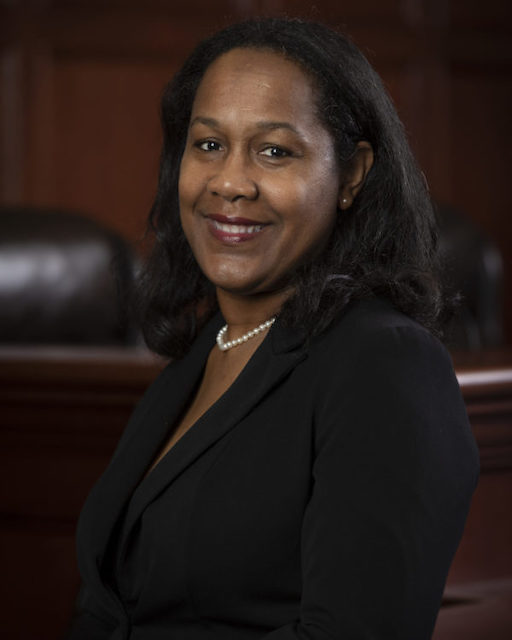Yearly Archives: 2022
Dec 2, 2022 Leah LitmanConstitutional Law
A National Law Journal article described how, in keeping with prior Democratic administrations, President Biden has relied less on clerkship experience—or at least a particular kind of clerkship experience—than prior Republican administrations. The article observed that while “the road to the bench for many Trump nominees ran through the chambers of a handful of particular judges and justices” (such as Justices Thomas and Scalia), “Biden has relied far less on feeder judges in his nominations.”
Why might that be? And is that a good or a bad thing? A recently published article by Brandon Hasbrouck offers one way of thinking through this. In Movement Judges, Hasbrouck writes movingly (no pun intended) about the importance of appointing jurists “who understand[] that our Constitution contains the democracy-affirming tools we need to dismantle systems of oppression”—judges who “consistently bear in mind the consequences cases have for individuals’ real lives beyond the courtroom.” (Full disclosure: I’m thanked in the article’s acknowledgments for comments on a draft.) Hasbrouck further describes a movement judge as a jurist who is “more committed to shifting fundamental understandings of how the law operates.” And he contrasts these judges and the strategies for appointing these judges with the kinds of judges and the kinds of strategies that Republican administrations have pursued; Hasbrouck describes the Republican strategy as a top-down, hierarchical approach to judicial selection that may have advanced the “conservative legal movement’s” goals, but does not offer the kind of sociological or democratic legitimacy that movement judging would. Continue reading "Movement on Judges"
Dec 1, 2022 Margaret KwokaAdministrative Law
Christopher J. Morten,
Publicizing Corporate Secrets, 171
U. Pa. L. Rev. __ (forthcoming 2023), available at
SSRN.
There has long been great debate about the extent to which the public should have access to government-held information that concerns private businesses. Primarily sought through requests made under the Freedom of Information Act (FOIA), this type of information is often claimed exempt from mandatory disclosure under FOIA’s Exemption 4, which covers trade secrets and confidential commercial or financial information obtained from a third party. But the state of the law has been evolving in an unsatisfactory way. For example, Sonia Katyal and Charles Graves have a recent searing critique of the over-application of the trade secrets doctrine generally, and as I reviewed a couple of years ago, Deepa Varadarajan brilliantly takes apart the justifications for the sweeping expanse of Exemption 4 specifically. Both pieces, and others, have pointed out the expansion of commercial secrecy beyond the traditional justification to protect competitive innovations. Calls for reform, such as this recently proposed legislation, have typically centered on cabining the trade secrets protections to apply more narrowly, thus rebalancing the interests in public transparency against those of business secrecy.
This line of scholarship is rich and worthy, but Christopher Morten’s outstanding forthcoming article, Publishing Corporate Secrets, finds a fresh third angle to the problem, rejecting the idea that line drawing is even necessary and embracing as a solution a middle ground between full disclosure and guarded secret keeping. Are you intrigued by the idea that the government might be able to publish important information without first deciding whether it constitutes a trade secret? Or that there is a way to publish trade secrets for the social good without competitors profiting from it? So was I. Read on. Continue reading "Against Government’s Reification of Business Secrecy"
Nov 30, 2022 Anne Marie LofasoWork Law
In Text Is Not Enough, Anuj Desai analyzes the Supreme Court’s 2020 decision in Bostock v. Clayton County, which held that it is unlawful for employers to fire individuals merely because they are gay or transgender, to raise several points about the Court’s favorite interpretative tool, textualism. Professor Desai shows that—contrary to the “conventional wisdom” that the Bostock majority and dissenting opinions showcase “dueling examples of textualism”—textual analysis is insufficient to decide the question whether the term “sex” includes sexual orientation for purposes of Title VII. (P. 1.) Accordingly, “in difficult, contested cases, statutory interpretation is unavoidably a multimodal enterprise that involves consideration of, at least, text, semantic context, statutory purpose, history (statutory, legislative, social, and political), social context, precedent, moral judgment, and consequentialist reasoning.” (P. 3.)
Bostock comprises three consolidated cases, only two of which Professor Desai examines: Bostock itself, where the county employer discharged Gerald Lynn Bostock, a Child Welfare Services Coordinator, when his co-workers discovered that he played for a gay recreational softball league; and Altitude Express v. Zarda, where a skydiving company fired one of its instructors when a customer complained that he was gay. Both cases raise the legal question of whether employment discrimination because of sexual orientation constitutes discrimination “because of…sex” within the meaning of Section 703(a)(1) of Title VII. Justice Gorsuch’s majority opinion says yes; Justice Alito’s and Justice Kavanaugh’s dissenting opinions say no. All three Justices claim that the text answers the question to support their distinct conclusions. Continue reading "Dueling Textualisms or Multimodal Analysis? Using Bostock to Show Why No One Is Really a Textualist"
Nov 29, 2022 Phyllis C. TaiteTrusts & Estates
Attorney Matthew Van Leer-Greenberg evaluates the continued relevance of family limited partnerships (“FLPs”) in estate planning. FLPs have been excellent tools for asset protection, continuity of control, succession planning, and attainment of substantial tax benefits. With other options such as limited liablity companies and corporations offering some of the benefits of FLPs, Leer-Greenberg explores whether recent cases have diluted key benefits of FLPs—namely, valuation discounts and exclusion from the gross estate for estate tax purposes.
In Family Limited Parnerships: Are They Still a Viable Weapon in the Estate Planner’s Arsenal?, Leer-Greenberg begins by discussing Internal Revenue Code (“IRC”) § 2036, a key provision for tax planning benefits of FLPs that generally requires inclusion of transfers with a retained life estate in the decedent’s gross estate. FLPs can be structured in ways that remove the transfer from the transferor’s gross estate at death while discounting the value of the lifetime transfer for purposes of the gift tax during life. To achieve the intended outcome from a transfer to a FLP, the transferor must give up control and make a bona fide gift or sale of the interest. Continue reading "Sometimes the Road Is Less Traveled Because It’s the Wrong Direction"
Nov 28, 2022 Stacy-Ann ElvyTechnology Law
Consumers accessing goods and services online are inundated with numerous disclosures, privacy policies, end user license agreements and terms and conditions. In connection with the so-called “duty to read,” consumers have historically been presumed and expected to fully review contract terms as part of the contract-making process. Yet, as several scholars have observed, consumers do not appear to consistently review contract terms: what some have called the “no-reading problem.” The failure of consumers to review and understand contract provisions before manifesting assent may incentivize companies to offer one-sided contracts with terms that are primarily beneficial to businesses.
In their new article, Contracts in the Age of Smart Readers, Professors Yonathan A. Arbel and Samuel Becher make a noteworthy contribution to scholarship in the technology and contract law fields by highlighting how nascent technological advancements in language models associated with artificial intelligence can disrupt the status quo. Their powerful article adds to an existing body of scholarship exploring the important connection between technological developments and what the authors describe as one of the underlying justifications for legal intervention in consumer transactions: the “no reading problem.” Continue reading "Novel Language Models as a Technological Solution to the No-Reading Problem"
Nov 25, 2022 Ronen AvrahamTorts
Yehuda Adar & Ronen Perry,
Negligence Without Harm, __
Geo. L.J. __, (forthcoming), available at
SSRN.
I like papers that go against well-established conventions, theories, and practices–papers that punch up. Such is Yehuda Adar’s and Ronen Perry’s (hereinafter A&P) new paper titled: Negligence Without Harm, which argues that victims could sue and receive remedies for a tort of negligence even if they have not suffered any harm.
For at least a century, every first-year common law student has known that the tort of negligence is comprised of four elements: duty of care, breach of duty, causation, and harm; and that to win on a negligence claim, the plaintiff must prove all these elements (as well as to overcome defenses such as contributory negligence). Continue reading "Punching up on the Tort of Negligence"
Nov 24, 2022 Charlotte CraneTax Law
In the most recent update of the Congressional Research Service pamphlet, Corporate Tax Reform: Issues for Congress, RL34229 (2021), Jane Gravelle presents a survey of the recent economic literature that has been invoked to support various changes in the corporate income tax. Gravelle is an economist who has spent her career bridging the gap between academic approaches to tax and the nitty gritty of tax policymaking within the beltway. In this document she explains how little anyone knows about the corporate income tax in the US.
As Gravelle points out, the corporate income tax has shrunk in importance in the last 70 years, declining from 30% of federal tax revenues and 5.6% of GDP to less than 10% of federal tax revenues and less than 3% of GDP. Of course, at the beginning of that time period, the corporate income tax could be used for the purposes of most economic analysis as essentially the equivalent of all business income taxes. As Gravelle points out, the rise of other business forms that afford the benefits of incorporation without attracting the corporate tax is responsible for a large portion of this shift. Sheltering through offshore entities has contributed much of the rest. Continue reading "What Do We Know About the US Corporate Income Tax?"
Nov 23, 2022 Sarah SchindlerProperty
Michael Pollack,
Sidewalk Government (Aug. 23, 2022), available in draft at
SSRN.
In his forthcoming article, Sidewalk Government, Michael Pollack explores the nature and governance of sidewalks in the U.S. through both a property law and local government lens. While most of us have likely used a sidewalk to get from one place to another, we often don’t think about the many complex ways that localities govern these critical spaces.
When I moved to Maine over a decade ago, I was surprised to learn that I was personally responsible for shoveling snow off the sidewalk in front of my house. A few years later, the city expanded the boundaries of the downtown Business Improvement District (“BID”) to cover the other side of my street, after which my across-the-street neighbors no longer had to shovel; the BID did it for them. Continue reading "Who Controls the Sidewalks?"
Nov 22, 2022 Sergio J. CamposCourts Law
Legal scholarship comes in a variety of forms. One form that I like lots is the law review online supplement. Online supplements allow scholars to address cutting-edge issues without the delay of the normal publication process. The submissions also tend to be shorter and thus more accessible, not only to scholars but to practitioners, judges, and policymakers in the field. A good piece will not only efficiently discuss an emerging legal trend but suggest a legal reform or solution that helps out on-the-ground practitioners sooner rather than later.
Michael Francus’s wonderful piece on the Texas Two-Step hits these marks. The piece, which is a joy to read, discusses the emergence of the “Texas Two-Step” as a procedure to deal with mass tort liability. For the uninitiated, defendants often use bankruptcy to resolve mass-tort liability. Continue reading "Cutting Into the Texas Two-Step"
Nov 21, 2022 Marco JimenezLexRemedies
In a recent essay, Preliminary Damages, Professor Gideon Parchomovsky and Justice Alex Stein have not only come up with a creative way to help indigent and/or poorly-financed plaintiffs finance their lawsuits against intransigent and deep-pocketed defendants, but in the process, they have plugged an important philosophical gap in the remedies literature by proposing the novel remedy of “preliminary damages,” a legal remedy mirroring its equitable counterpart “preliminary injunctions.” There is a lot in this essay that should be of particular interest to Remedies scholars. This Jot cannot do justice to their piece in so short a space, but I hope to offer the reader at least a small taste of this delicious article, which may entice some readers to sit down and enjoy the full course.
In short, their argument is as follows: it is a mere historical accident that courts of equity, whose primary form of relief was the injunction, and courts of law, whose primary form of relief was money damages, grew up independently. However, as these two courts have long since been merged in most states, there is no good reason for a court today to offer one type of remedy (i.e., preliminary injunctions) that happens to have developed in a court of equity while failing to offer its legal counterpart (i.e., preliminary damages). Or, as the authors ask in their article, “If courts can award plaintiffs preliminary injunctions before the conclusion of a trial, why can’t they award preliminary damages? Or, contrariwise, if no damages can be awarded until liability is found, how is it that preliminary injunctions can be granted?” (P. 242.) The answer, to be sure, is purely historical, and by bringing this new form of damages to the attention of judges and scholars, they hope to not only correct this historical anomaly, but to make it easier for indigent plaintiffs to overcome the sometimes nefarious tactics of sophisticated defendants whose deep pockets, intransigence, and policy of “deny, delay, defend,” (P. 256) rather than the strength of their defense, keeps many legal wrongs from being righted by our courts. Continue reading "Expanding the Remedial Toolbox: A Legal Analogue to Preliminary Injunctions"















